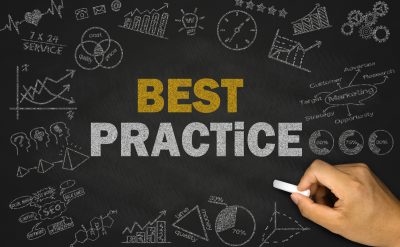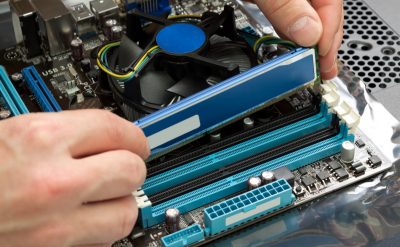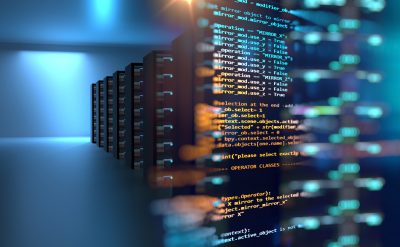Technology helping people be healthy
We may not realize it, but technology is indeed helping us stay healthy. A smartwatch tracks your heart rate, step count, blood oxygen level, and calls for help if there are any health issues. Doctors are also using medical devices to keep track of their patients. Doctors can track patient’s electrocardiographic signals, blood pressure, and oxygen saturation all via telemonitoring.
As the population is rising, so does patient data. There comes the need for data centers to manage a humongous amount of healthcare data.
Driven by generous incentives to adopt electronic medical record (EMR) solutions and increased documentation, healthcare providers are now facing issues with managing, collecting, securing, and storing a generous amount of sensitive protected health information (PHI).
Implementation of best practices
As the healthcare industry enters a new decade, it undergoes a massive technological transformation. Running a data center is a complex task as it is important to maintain massive data along with security. Therefore, it is essential to implement best practices for healthcare data centers.
Following are the best practices one should follow to maintain healthcare data centers:
1. Unifying the data center with stakeholders and representatives
Healthcare is a sector where several practitioners and disciplines are brought together for a most noble cause, i.e., saving lives and improving patients’ quality of life. This makes sense to work with diverse teams by including representatives of all involved areas during the initial data center refresh phase.
Although teams may differ among organizations, it is important to consider stakeholders’ detailed knowledge about security, IT infrastructure, and applications.
New collaborative care models need better data integration and communication among healthcare providers so that patient data could be shared, aggregated, and evaluated by each stakeholder in the care continuum (including patients).
Clinical section representatives could offer valuable insights into how doctors, technicians, and nurses use resources. The team will also benefit from non-clinical users such as human resources, administrative services staff, and other facilities. Don’t forget to include a C-level sponsor to overcome barriers.
2. Describe your healthcare infrastructure strategy
The primary task is to assess your present data center. The Updated Configuration Management Database (CMDB) could play a powerful tool in gauging hardware and software assets of the current healthcare infrastructure.
The cross-functional team could come into play by helping the IT team go through CMDB findings to manage unused applications, devices, or hardware. Further, this best practice in healthcare for maintaining data centers will enhance security by eradicating vulnerabilities living in outdated systems. Also, it will help the cross-functional team differentiate between applications that are good candidates for modernization, which could be used to map interdependencies and data sources.
CMDB results will help your team align applications with optimal cloud and data center platforms.
3. Use of DCIM tools
Few things are important for data center operations best practices, such as an efficient data center infrastructure management (DCIM) platform. Managing a data center without DCIM software is like trying to drive a car without a clutch. With the help of DCIM tools, healthcare data center professionals could monitor power usage, traffic demands, and cooling needs in real-time.
4. Applying enhanced security to healthcare data center
To prevent data breaches, it is necessary to have robust security systems at endpoints such as mobile devices, smartphones, and tablets. For instance, a violation at Oregon Health and Science University included illegal storage of unencrypted patient data in the cloud by two residents. Therefore, security is a must.
5. Practice good data hygiene
By implementing good data hygiene in the healthcare sector, data centers could help patients and team members manage redundant, obsolete, and trivial (ROT) data and free up valuable storage and computing resources for more important requirements.
Reducing the burden on healthcare infrastructure could have a beneficial impact on data center standards. This is because computing equipment will have lower power and cooling demands.
The Healthcare industry is expanding rapidly and raises questions about how to best maintain their data centers—in the cloud or on-premises.
It is important to conduct a detailed data center evaluation when making changes in the healthcare IT infrastructure. Whether supporting mobile devices and internet-of-things (IoT), refreshing hardware, integrating cloud-based applications, and deploying new software, you must evaluate the healthcare IT infrastructure changes.
What services are included in a healthcare data center?
Following are the healthcare data center services:
- Dedicated data centers
- Private suites
- Secure cages
- Individual cabinets
- Carrier-neutral network
- Multi-homed BGP-based managed internet access
- 24-hour smart hands
- Data center asset tracking
Final words
It is amazing to see what technological advancements can do for humans. Data centers are the heart of many healthcare IT accomplishments. Life sciences companies and healthcare innovators are concentrating on developing diagnostic technologies and digital medication strategies to boost 2021 best practices for healthcare data centers.
For more information download our latest whitepapers on data centers and best practices.













